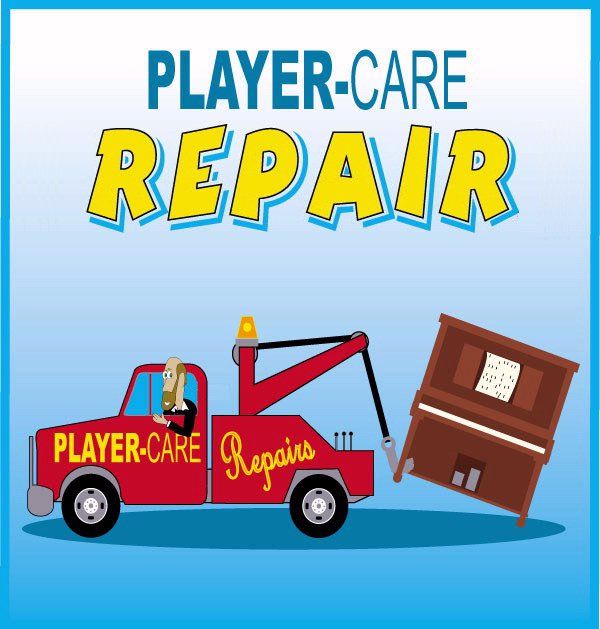
|

|

|

|

|

|
| Home | Manuals | Supplies | Search | Consult | Contact | Testing | Service |
|
Not until you have stood right next to a Reproducing Player Grand Piano can you say that you've heard an exact duplication of the works of Masters long gone from this earth. I have heard masterful works played on very expensive stereo equipment and it pails by comparison. On the other hand, the much more common Player Upright sings out the tunes of the Twenties and Thirties exactly the way they did when they were so prevalent. The Roaring Twenties, when people gathered together by the tens and twenties on a Tuesday evening at Aunt Betty's to sing and dance in the parlor, an educated "pedaler" could "create" the expression in the music by using sophisticated pedaling techniques and by using the Expression controls at his finger tips. Since the most common type of Player Piano is the 1920's style upright, I will address this part of the treatise to providing some simple tests to help owners determine the Basic Operating Condition of their unit. This information can also be used to evaluate most "88-note pneumatic" player pianos. What does pneumatic mean? Webster's 2 says "filled with or operated by compressed air." However, in the case of the Player Piano, pneumatic actually refers to small bellows which are vacuum operated. But I'm getting ahead of myself.  ... Back to Top ... Back to Top
One statement I hear quite often is, "It's very hard to pump". If I were a wise-guy I'd reply, "So why'd ya call me?".... Let me explain. First off, I'm not a wise-guy. Secondly, when a player piano is in excellent condition, the resistance one encounters when pumping too fast means that the reservoir/s that store the vacuum are empty and no more air can be sucked out of them. Unfortunately, when a person tells me that a unit is hard to pump or getting harder to pump, what they actually mean to say is, "I have to keep pumping faster and faster to make it play." My response in kind is, "Pumping a good player piano should be like taking a gentle walk on Sunday. It should not be an aerobic workout." This leads me to our First Test. The Exhauster Assembly (or Lower Section), which creates and stores the vacuum, must be able to "generate" and "hold" that vacuum for at least twelve seconds, bare minimum. The quickest test, while not the best test, is to put the unit into "Rewind", start pumping and then physically hold the roll so it stops turning. Then count the number of pumps it takes until the tension under your feet feels like pumping any harder might break something. In a new or properly restored unit, it will take three full pumps or less to reach 'lock-up'. I understand how vague that must sound, but if you can keep pumping and pumping and the treadles never get 'stiff', there is a leakage problem in the lower section or the air-motor and/or it's associated controls and tubing. The best test of the Lower Section is accomplished by removing all the connecting tubing and plugging or taping all the supply ports first. Then pump the treadles two or three times quickly. This should be enough to evacuate all the air from the reservoirs. If not, pump a few more times. When the reservoirs are completely collapsed, count the number of seconds it takes until the reservoir is all the way back opened. It should take at least twelve seconds for this to occur. A well rebuilt lower section will hold vacuum in the reservoir for at least thirty seconds. Typically, units that fail the "Reservoir (or reserve) Test" need to have the reservoir/s rebuilt at the very least. Next installment--testing the stack!! Below is a video that shows how you can use your lungs to check various devices in a player piano.
 E-Mail for John. Send me a letter. I enjoy hearing from new people. E-Mail for John. Send me a letter. I enjoy hearing from new people.

For The Accuracy or Validity of the Statements and/or Opinions Expressed within the Pages of the Player-Care Domain. Cartoon Graphics by E7 Style Graphics (Eric Styles)

|